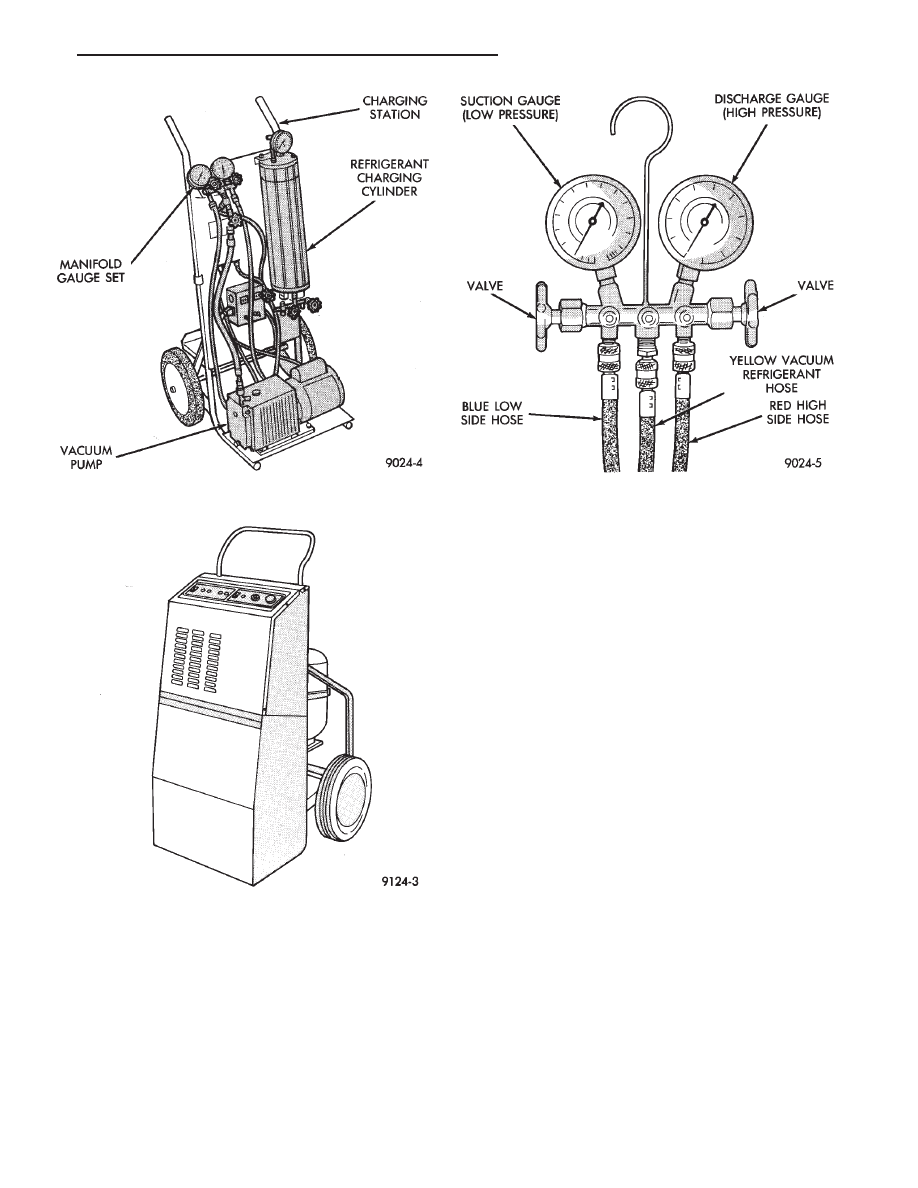Chrysler Town & Country/Voyager, Dodge Caravan, Plymouth Voyager. Manual - part 132

REFRIGERANT RECYCLING
(R-12) refrigerant is a chlorofluorocarbon (CFC) that
can contribute to the depletion of the ozone layer in the
upper atmosphere. Ozone filters out harmful radiation
from sunlight. To assist in protecting the ozone layer,
an (R-12) refrigerant recycling device that meets SAE
standard J1991 should be used. Contact an automotive
service equipment supplier for refrigerant recycling
equipment. Refer to the operating instructions pro-
vided with the recycling equipment for proper opera-
tion.
MANIFOLD GAUGE SET CONNECTIONS
GENERAL INFORMATION
The high pressure (discharge) (RED) hose should be
attached to the 1/4 in. discharge service port. This port
will be located on the discharge line between the air
conditioning compressor and the condenser, or on the
high pressure (liquid) line.
The low pressure (suction) (BLUE) hose should be
attached to the 3/8 in. suction service port. This port is
located on either the air conditioning compressor, or
the suction line between the expansion valve and the
compressor.
SUCTION (LOW PRESSURE) GAUGE CONNECTION
(1) Remove the service port cap from 3/8 in. suction
service port.
(2) Check all valves on the equipment being used to
verify they are closed.
(3) Inspect the hose gasket in the service port con-
nector at the end of the (BLUE) hose. If the gasket is
flawed, replace it.
(4) Thread the hose connector onto the service port
until the valve core depressor in the hose end makes
contact with the valve core in the service port. Quickly
secure hose connector to the service port to avoid
loosing refrigerant.
To disconnect suction gauge (BLUE) hose:
(a) Wrap the end of hose with a shop towel.
(b) Loosen the hose connector.
Fig. 2 Refrigerant Charging Station—Typical
Fig. 3 Refrigerant Recovery/Recycling
Station—Typical
Fig. 4 Manifold Gauge Set—Typical
.
HEATING AND AIR CONDITIONING
24 - 23